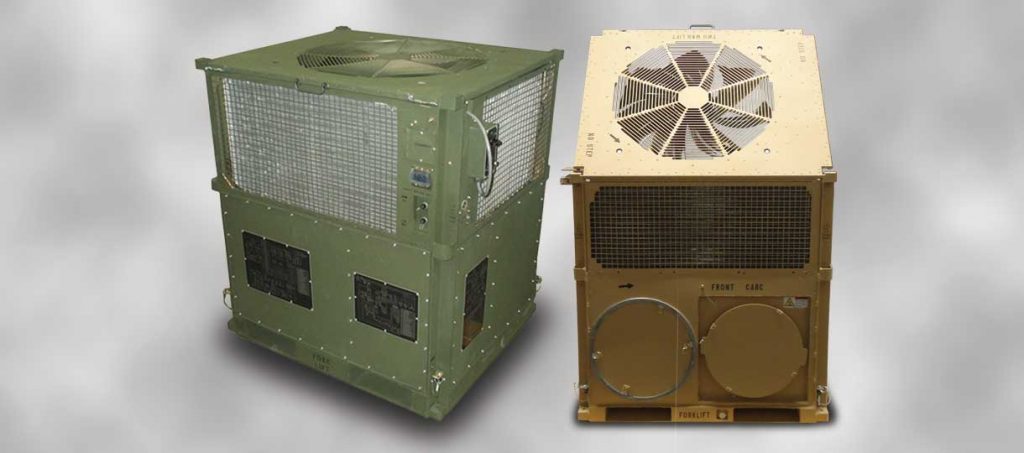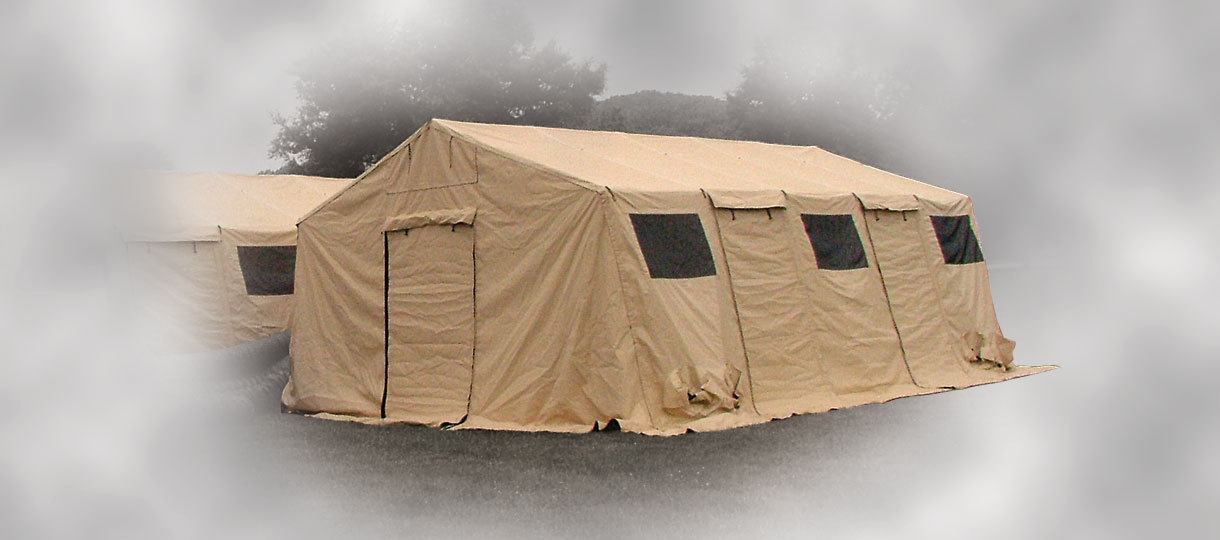As a Civil Engineer Corps officer in the Navy Reserve I have the privilege of partaking in field exercises with my assigned Seabee Battalion. That’s really just a nice way of saying I now and then get to spend a couple weeks camping in the desert while pretending to be at war. There’s a lot of things that happen during a field training exercise, but one of the most interesting (as a mechanical engineer) is the air-conditioned tents.
You might initially think that air-conditioning a tent smacks of a luxury item, but there are some practical reasons. For one, the tents can get really hot in the sun. They do have windows that can open up, but in many cases the windows must be kept closed for security purposes. The other reason is that many times the tents get filled with equipment that must be kept at reasonable temperatures. (One big caveat: Only a few of the tents get climate control. Most do not.) So how do you go about air-conditioning and heating a tent?
It first starts with a tent that has a reasonable envelope. You won’t be getting anything close to high efficiency, but there are a few tricks that can help out. The biggest is the fact that a large military tent is really two tents in one. An exterior tent that is colored for the environment (e.g. green for woods, tan for desert, white for snow) and an interior liner. Between these tents is an air gap that serves as insulation. This air gap gives the tent an envelope with a R-Value of around 2-3 which isn’t much but anything helps. Gaps are all sealed with extremely effective Velcro.
The next piece is the air-conditioner itself. An Environmental Control Unit (ECU) is a small packaged heat pump. The trailer mounted version is typically a generator and ECU combo providing climate control and power for the tent. The stand alone unit (pictured below) is powered from a separate generator. Efficiencies are in the 5-6 EER range which is nothing to write home about. However, the units are designed to provided a percentage of outdoor air just like a civilian packaged units. These units get connected to the tent with flexible duct for both supply and return. Inside the tent is a built in sock duct for even air distribution.

It’s not something you would do on a typical family camping trip, but keeping equipment and troops cool is serious business in the military and takes some interesting technology to make happen. Here at Forward Engineers, we seek to not only be a design and consulting firm but to also educate our clients about engineering technology. While doing so, we inevitably refresh our own knowledge and sometimes even learn something ourselves. If you are seeking to work with an engineering firm that is client-centered and strives to provides services that are on time, on budget and exceed expectations, please contact us. We would love to work with you on your next project!



